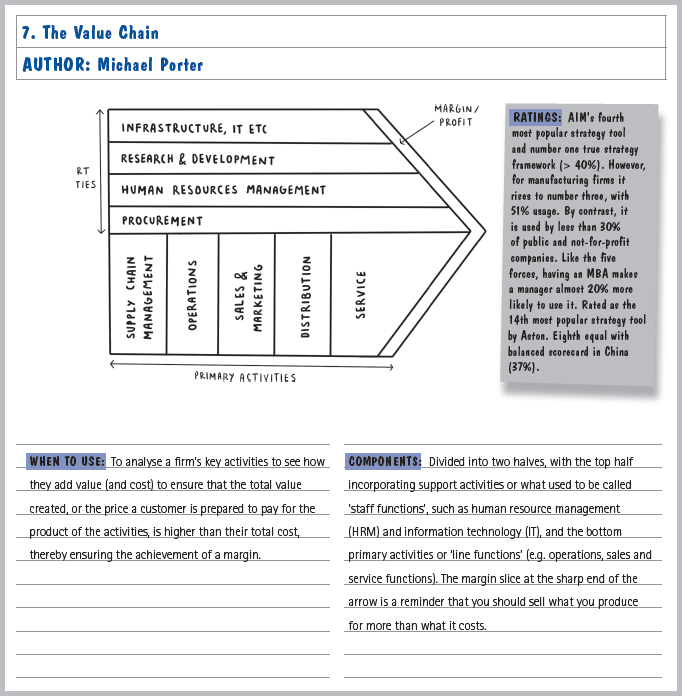COMPETITIVE POSITIONING
Purpose: Competitive positioning frameworks help to evaluate an organization's strengths and weaknesses, and make rational choices about the ways in which organizations might best differentiate themselves from other providers.
- The value chain - A graphical depiction of a firm's key activities to see how they add value (and cost) to ensure that the total value created, or the price a customer is prepared to pay for the product of the activities, is higher than their total cost, thereby ensuring a margin.
- Generic strategy matrix (GSM) - A simple outline that encourages strategic choice in strategic position between focusing on cost reduction or differentiating in other ways, and whether its competitive scope should be a broad target or a niche.
- Differentiation advantage categories - More granulated ways of thinking through what particular form of strategic differentiation an organization should focus on developing.
- Blue ocean strategies - A set of frameworks that promote strategies to take an organization away from what other firms are doing and how they are positioning themselves.
- Co-optition/the value net - A way of evaluating potential untapped or undervalued strengths that may lie in allying with other institutions for mutual strategic benefit. A useful complement to the five forces of industry.

Get Strategy Builder: How to create and communicate more effective strategies now with the O’Reilly learning platform.
O’Reilly members experience books, live events, courses curated by job role, and more from O’Reilly and nearly 200 top publishers.

